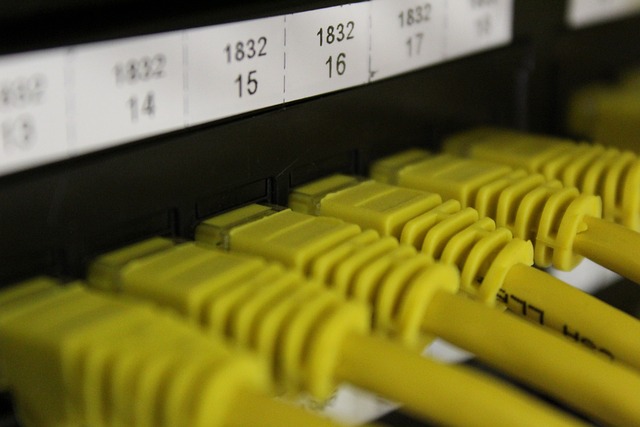
In today's fast-paced digital world, ensuring the resilience of your IT infrastructure is paramount. A resilient IT infrastructure not only withstands disruptions but also supports continuous business operations, safeguards data, and enhances overall organizational agility. In this blog post, we will explore key strategies for building a resilient IT infrastructure that can effectively respond to challenges and ensure long-term success.
1. Implementing Robust Disaster Recovery Plans
Strategy Overview: Disaster recovery (DR) plans are essential for minimizing downtime and data loss in the event of a disruption, whether it's a natural disaster, cyberattack, or system failure. A robust DR plan outlines procedures for restoring critical systems and data, ensuring business continuity.
Key Steps:
- Risk Assessment: Conduct a comprehensive risk assessment to identify potential threats and vulnerabilities. This helps in understanding which systems and data are critical and require priority protection.
- Backup Solutions: Implement automated, regular backups of all critical data. Ensure that backups are stored in multiple locations, including off-site or cloud-based storage, to prevent loss in case of local disasters.
- Regular Testing: Regularly test your disaster recovery plan through drills and simulations to ensure all team members are familiar with procedures and that the plan is effective.
Actionable Insights:
- Use a combination of full, incremental, and differential backups to balance storage use and recovery speed.
- Employ data deduplication techniques to optimize backup storage and reduce costs.
2. Leveraging Cloud Computing
Strategy Overview: Cloud computing offers significant advantages for IT resilience, including scalability, flexibility, and cost-efficiency. By leveraging cloud services, organizations can enhance their infrastructure's ability to handle varying workloads and recover quickly from disruptions.
Key Steps:
- Hybrid Cloud Solutions: Implement hybrid cloud solutions that combine on-premises infrastructure with public and private cloud resources. This approach provides flexibility and redundancy.
- Scalability: Utilize cloud services to scale resources up or down based on demand, ensuring that your infrastructure can handle peak loads and sudden spikes.
- Disaster Recovery as a Service (DRaaS): Adopt DRaaS solutions that offer automated failover and failback capabilities, enabling quick recovery of critical systems.
Actionable Insights:
- Ensure that your cloud provider complies with relevant security and compliance standards to safeguard sensitive data.
- Use cloud-based monitoring and management tools to maintain visibility and control over your hybrid environment.
3. Enhancing Network Security
Strategy Overview: Network security is a cornerstone of IT resilience. Protecting your network from cyber threats ensures that your infrastructure remains operational and your data stays secure. A multi-layered security approach can effectively mitigate risks.
Key Steps:
- Firewalls and Intrusion Detection Systems: Deploy advanced firewalls and intrusion detection/prevention systems (IDS/IPS) to monitor and block malicious activities.
- Zero Trust Architecture: Implement a zero trust security model that verifies every access request, regardless of its origin. This approach minimizes the risk of insider threats and lateral movement by attackers.
- Regular Security Audits: Conduct regular security audits and vulnerability assessments to identify and address potential weaknesses in your network.
Actionable Insights:
- Use network segmentation to isolate critical systems and contain potential breaches.
- Educate employees on cybersecurity best practices and conduct phishing simulations to raise awareness.
4. Implementing Redundancy and Failover Mechanisms
Strategy Overview: Redundancy and failover mechanisms are crucial for ensuring high availability and minimizing downtime. By duplicating critical components and systems, organizations can maintain operations even in the face of hardware failures or other disruptions.
Key Steps:
- Redundant Systems: Deploy redundant servers, storage devices, and network components to eliminate single points of failure.
- Automated Failover: Implement automated failover solutions that detect failures and switch to backup systems without manual intervention.
- Load Balancing: Use load balancers to distribute workloads evenly across servers, preventing any single server from becoming a bottleneck.
Actionable Insights:
- Regularly test failover mechanisms to ensure they function correctly during actual incidents.
- Use geographic redundancy by replicating data and services across multiple data centers in different locations.
5. Adopting Proactive Monitoring and Maintenance
Strategy Overview: Proactive monitoring and maintenance are vital for identifying and addressing issues before they escalate into major problems. Continuous monitoring provides real-time insights into the health and performance of your IT infrastructure.
Key Steps:
- Monitoring Tools: Implement comprehensive monitoring tools that provide visibility into all aspects of your infrastructure, including servers, networks, and applications.
- Predictive Analytics: Use predictive analytics to forecast potential issues based on historical data and trends, allowing for preemptive action.
- Scheduled Maintenance: Conduct regular maintenance tasks, such as patching and updating software, to keep systems secure and up-to-date.
Actionable Insights:
- Establish a dedicated team or use managed services for round-the-clock monitoring and support.
- Set up automated alerts and notifications to quickly respond to anomalies and potential threats.
Conclusion
Building a resilient IT infrastructure is an ongoing process that requires a combination of robust disaster recovery plans, cloud computing, enhanced network security, redundancy mechanisms, and proactive monitoring. By implementing these key strategies, organizations can ensure that their IT systems remain operational, secure, and capable of supporting business continuity in the face of disruptions.

